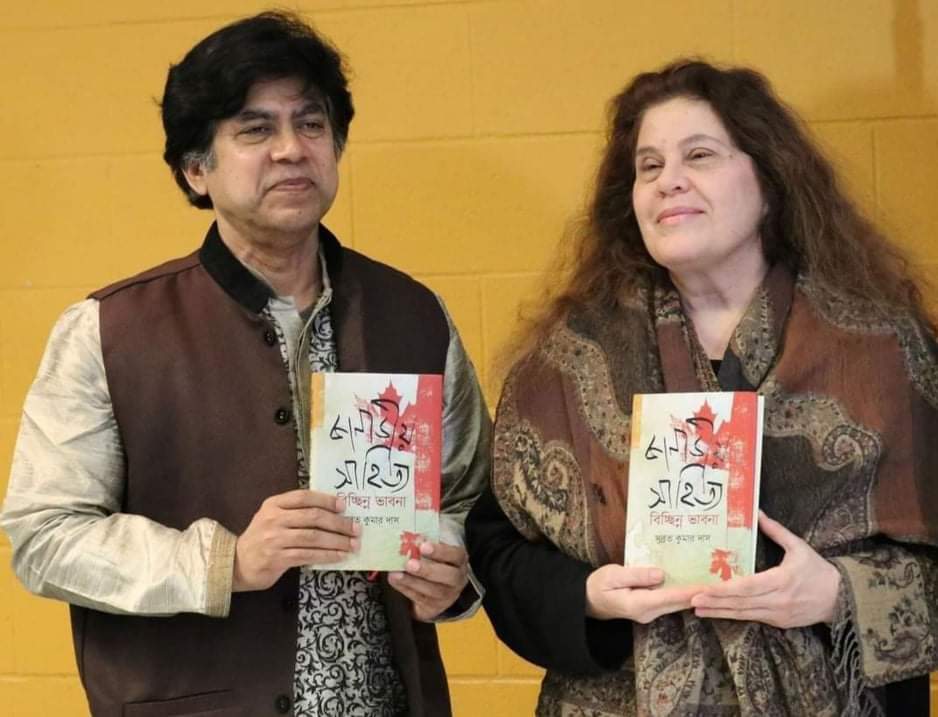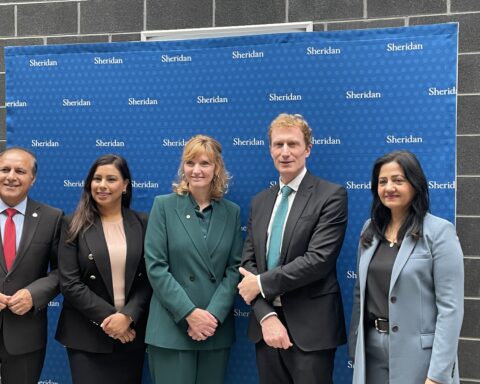While Bengali is one of the top 15 languages spoken in immigrant households in the Greater Toronto Area, advocates say more institutionalized efforts in language and culture training are needed to ensure its linguistic and literary traditions are carried on by younger generations.
Canada owes its linguistic diversity to more than 200 languages spoken at home as a native language. Bengali is a strong contributor to this diversity thanks to a population of more than 100,000 Bengalis from Bangladesh and a sizeable Bengali diaspora from India. According to the 2011 census, Bengali was one of the few language groups that grew in its usage by 40 per cent.
Shyamal De Sarkar, a theatre veteran and member of the Toronto Bengali Drama Group, has been organizing children’s drama classes for several years now to involve the children of Bengali immigrants.
He explains that while new immigrants and the older generation of Canadian Bengalis contribute significantly to the thriving cultural scenes in Toronto Bengali communities, the young generation is not self-motivated in their participation.
Still, he hopes that “when there is a sustained effort to connect the immigrants’ native culture with the Canadian literary landscape through a multidisciplinary approach, international languages and culture get due recognition and representation in this country.”
A proud moment for Bengali diaspora
The year 2020 marked a significant milestone in recognition of the Bengali language and literature in Canada. The Toronto International Festival of Authors (TIFA), known to be the longest-running literary festival in Canada, invited a team of Bengali authors led by Subrata Kumar Das, an eminent writer, critic, translator and essayist, for a series of events being presented in the authors’ own language.
“Das, who has authored 27 books on literary criticism and translation works, has played a significant role in creating a bridge between mainstream Canadian writers and Canadian Bengalis,” said Roland Gulliver, the festival’s director.
TIFA also confirmed that Bengali authors would be invited for the 42nd edition starting Oct. 21, 2021, the details of which will be announced later this month.
Toronto’s multilingual and multicultural positioning were important factors that motivated the festival’s organizers to add newer languages to represent the city’s ethos justly, Gulliver added.
After all, Bengali is one of the top 15 most popular second languages spoken in immigrant households in the Greater Toronto Area.
How to inspire young Canadian Bengalis?
Depending on the density of the Bengali population, many school boards in Toronto region offer Bengali as part of their international language programs. For example, Halton District School Board provides Bengali language classes on Saturday mornings through its International and Indigenous Language (Elementary) Program.
Similarly, Toronto District School Board runs Bengali language sessions as part of its International Languages – Elementary program at chosen schools throughout the school year.
But according to Sarkar, existing Bengali language schools across Toronto region “often fail to elicit culturally relevant interest from our children.”
“That is why it is more important that we continue to organize more cultural events geared towards them as the first step, as we have been doing in my organization,” Sarkar says of the efforts of the Toronto Bengali Drama Group.
Das also believes that inspiring the young ones towards Bengali literary heritage is a prerequisite to promoting the language.
In 2017, he initiated a project to teach Bengali literature in English to young Canadian Bengalis. The project, which received considerable critical acclaim, was run by the Bengali Literary Resource Centre, a not-for-profit Bangladeshi literary organization in Toronto. One of the Centre’s goals is to reduce the generational gap in the Canadian Bengali diaspora by introducing literary resources.
Das moved to Canada in 2013 with his wife and daughter, fleeing political unrest and oppression of religious minorities in Bangladesh. Soon he noticed sporadic and insulated efforts in Bengali literary circles that had no visibility in the Canadian literary landscape.
“Besides organizing literary events, I associated myself with literary, cultural, social and religious activities initiated by Bengalis from both India and Bangladesh,” Das recollects.
“My Bengali book on Canadian literature based on four years of research has received huge appreciation from Bengalis living in Toronto,” he adds proudly.
New solutions needed
Despite the recognition of Bengali authors on the Canadian literary map, experts remain concerned with the young generation’s dwindling interest in their native language and culture.
“We need to teach Bengali in a way which is appropriate for a second language learner. Teachers need training with specific strategies from that point of view. A new curriculum can be drafted and used for the new generation of Bengali learners. We can kick it off from Canada,” explains Das, full of enthusiasm.
He also proposes forming a new platform comprising representatives from levels of society to reach the government agencies for funding.
Asoke Chakravarty, another Bengali intellectual who participated in TIFA in 2020, thinks that translating children’s literature into Bengali can be a great tool to promote the language among second-generation Canadian Bengalis.
Chakravarty, a poet, writer, artist and playwright who migrated to Canada 55 years ago from India, has 17 books to his credit and has written for 80 leading magazines across three continents.
He stresses that translation involves an in-depth understanding of a language’s nuances and thus necessitates the translator’s familiarity with the ethos of the time and place chosen for the work.
Das hopes that the heightened visibility in mainstream Canadian literature that his native language has gained through TIFA might draw the attention of young Canadian Bengalis to a proud linguistic and literary heritage that they inherit.
“Bengali’s entry into TIFA symbolizes an inspiring story for the Bengali diaspora and specifically for the young immigrant community,” he said.
Amrita is an NCM-CAJ Collective Member, journalist and content writer, with nearly a decade of experience in content development and journalism in three countries. She started her career as a journalist with a leading daily, The Statesman, in India. She has also led content and editorial teams for several web content management firms. Amrita served as a Communications and Content specialist for some non-profit organizations like the American Red Cross after her move to the U.S. Based out of Toronto, she continues to follow her passion by reporting on human rights violations, education, crimes, inequality and community engagement. Amrita holds a Post Graduate Diploma in Print Journalism from Chennai, India.





